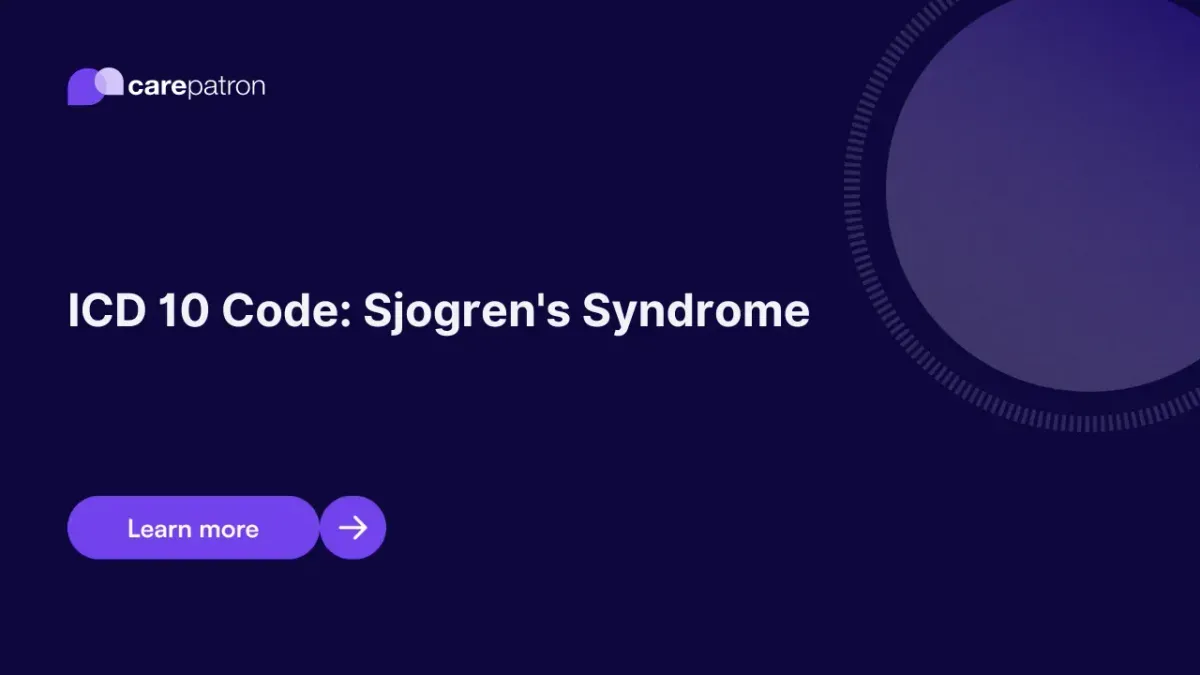
Sjogren's Syndrome ICD-10-CM Codes | 2023
Navigate Sjogren's Syndrome coding with our comprehensive guide on ICD-10 codes, ensuring accurate diagnosis and billing for 2023.
Use Code
Commonly asked questions
Use when a patient is diagnosed with Sjogren's Syndrome, confirmed by clinical evaluation and diagnostic tests.
Treatments include symptomatic relief measures, immune system suppressants, and addressing specific organ involvement.
It indicates a medical diagnosis of Sjogren's Syndrome, which is essential for treatment plans and insurance billing.
EHR and practice management software
Get started for free
*No credit card required
Free
$0/usd
Unlimited clients
Telehealth
1GB of storage
Client portal text
Automated billing and online payments
